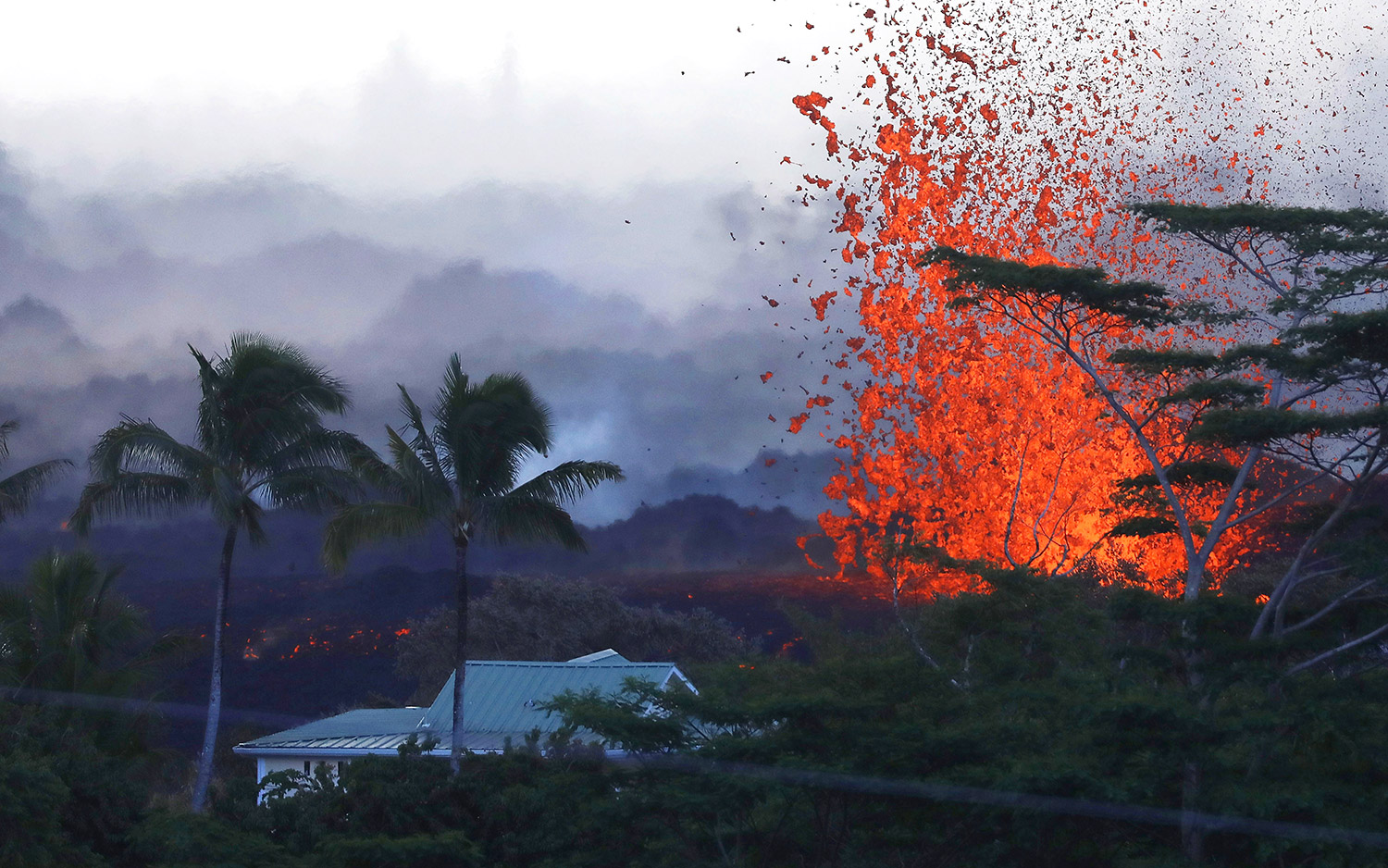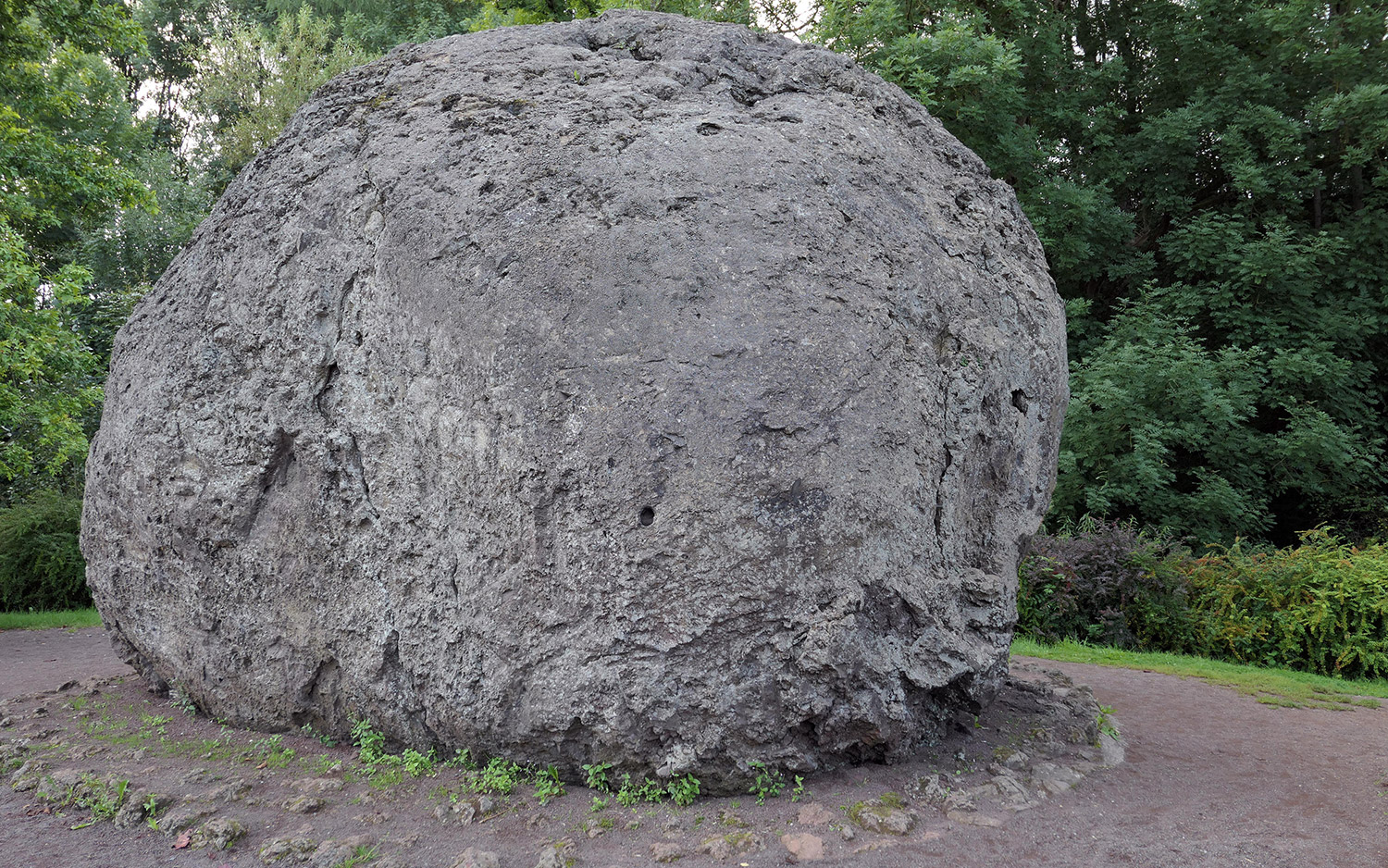How Did a 'Lava Bomb' Split a Man's Leg Open?

When you think of the ways a volcanic eruption can hurt or kill, you probably imagine gooey lava streams, steaming fissures and crumbling ash columns that could turn a whole city into statues. You might not imagine the volcano belching gigantic, red-hot cannonballs at you, though — but they do that, too.
When globs of molten lava blast into the air and solidify, they become "lava bombs." One such bomb recently struck Hawaii Island resident Darryl Clinton while he tried to put out a fire in his neighborhood. Burning ejecta from the still-erupting Kilauea volcano had lit the blaze. According to CNN, the chunk of hardened lava shot like a rocket from a fissure roughly 100 yards (91 meters) away from Clinton, set his porch on fire and sliced his leg to the bone. [Fiery Lava from Kilauea Erupts on Hawaii's Big Island]
"It was the most forceful impact I've ever had on my body in my life," Clinton told the KHON news channel. "I've been hit by big waves and various things. That was just incredibly powerful and hot. It burned."
Clinton is recovering in the hospital and will be able to walk again in about six weeks, KHON reported. He is the first person seriously injured by Kilauea volcano's recent eruptive period, which began several weeks ago. But if more folks stray too close to erupting fissures, he may not be the last.
What are lava bombs?
Lava bombs, also known as volcanic bombs, are partially molten chunks of lava that explode out of volcanic vents during eruptions, harden in the air and then come crashing down again. Lava bombs can be hurled as high as 3,300 feet (1,000 m) and land still hot enough to set houses ablaze, prior studies have shown.
What's more, depending on the size and viscosity of the lava being ejected, these bombs can change shape during flight, becoming more smooth and aerodynamic. The final shape of the bomb determines its name.
According to the American Museum of Natural History, spindle bombs spin and taper during flight and end up looking like red-hot footballs. Bread crust bombs solidify on the outside but remain fluid on the inside, resulting in gas bubbles and cracks along the bomb's surface. Cow pie bombs land while they're still mostly liquid; when they hit the ground, they splat like a pancake — or, you know, something you'd rather not step in on a farm.
Sign up for the Live Science daily newsletter now
Get the world’s most fascinating discoveries delivered straight to your inbox.

Luckily, the lava bomb that hit Clinton's leg was relatively small for one of these incendiary boulders. The town of Strohn, Germany, holds one of the world's largest known lava bombs, weighing more than 260,000 lbs. (120 metric tons) and spanning 16 feet (5 m) in diameter. This exceptional piece of house-size ordnance formed in the nearby Wartgesberg volcano, but probably never flew very far; geologists suspect the massive bomb acquired its weight and volume by rolling up and down the volcano's crater, caking more and more lava along its edges as if nature were trying to make a lava snowman.
Lava bombs aren't just dangerous projectiles, though; they're also objects for research. Scientists can study these bombs to get a glimpse of the mineral compositions of volcanoes and the Earth deep beneath them.
Usually, as Clinton pointed out to KHON, you can hear the initial eruption that launches a lava bomb long before the bombs actually fall. But that doesn't mean a stray chunk of lava won't come flying straight out of a vent like a shell from a cannon, before you have time to run for cover. To avoid lava bomb-related injury, take heed of evacuation notices (Clinton admitted his neighborhood was under evacuation, but he felt safe in his home) — and please, no matter where you are, do not attempt to stop the lava.
Originally published on Live Science.

Brandon is the space/physics editor at Live Science. His writing has appeared in The Washington Post, Reader's Digest, CBS.com, the Richard Dawkins Foundation website and other outlets. He holds a bachelor's degree in creative writing from the University of Arizona, with minors in journalism and media arts. He enjoys writing most about space, geoscience and the mysteries of the universe.









